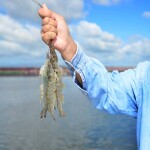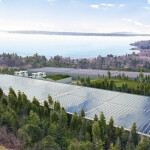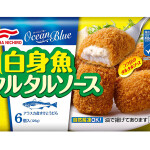The Monterey Bay Aquarium’s (MBA) Seafood Watch program on Thursday updated its popular consumer seafood guide, which groups seafood species into three color-coded categories — best choices (green), good alternatives (yellow) and avoid (red). The guide is updated every six months.
With this latest change to the guide, the MBA added three species to the best choices list and downgraded one species from best choice to good alternative.
The MBA moved Alaska pollock from best choice to good alternative due to several concerns with the fishery, including damage to the seafloor caused by trawling gear, rising bycatch rates and the potential impact on chinook salmon populations, and the effect on the Steller sea lion population.
“Despite these concerns, some aspects of pollock fishery management are progressive and precautionary,” said the MBA. “Management has taken steps toward an ecosystem based approach that, relative to other fisheries worldwide, is considered highly effective.”
News of the demotion comes one day after Alaska’s Bering Sea and Aleutian Islands pollock fishery was recommended for Marine Stewardship Council recertification by a third-party certifier. The fishery was originally certified as sustainable in 2005.
Greenpeace spokesperson John Hocevar applauded the MBA’s decision. “I have a lot of respect for the work that the MBA put into their pollock report, and for the scientific rigor behind the Seafood Watch program in general,” he said. “While we don’t agree on everything, the aquarium’s recommendations are a valuable tool for seafood consumers. The MSC, meanwhile, is increasingly becoming a source of frustration as they certify, and re-certify, more and more fisheries that have significant conservation concerns.”
The three species the MBA upgraded to best choice are U.S.-farmed coho salmon, U.S.-farmed freshwater prawns and U.S.-farmed shrimp (in open systems and in closed systems or inland ponds). This is the first time that the MBA has categorized farmed salmon or farmed shrimp as a best choice.
U.S. farmed coho salmon is raised in a closed-containment system. “Closed systems, such as tanks, contain the fish and water within the farm rather than releasing them into the environment,” said the MBA. “In addition, the use of disease-free source water and strict security protocols on these farms minimize the spread of disease to the wild. For these reasons, closed systems impact the environment less than open net pens.”
The MBA also praised U.S.-farmed freshwater prawns and shrimp raised in open systems and in closed systems or inland ponds.
“U.S.-farmed freshwater prawns are raised in small-scale operations using practices that are compatible with the prawn’s biology. Freshwater prawns are omnivores and consume the plants, insects and other naturally occurring food available to them in the farm ponds. Only small amounts of added feed are required,” said the MBA.
“Shrimp from U.S. farms are produced under strict environmental laws, making them a better choice than imported farmed shrimp,” added the aquarium.
Discussion: What do you think about SeafoodWatch's revised recommendations for Alaskan pollock and "Best Choices" recommendations for aquaculture species in the U.S.?





